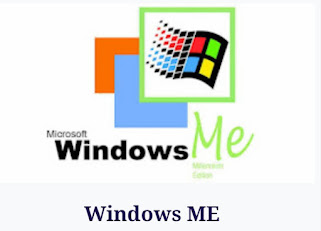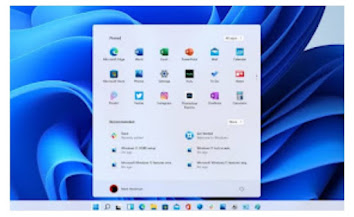Operating System (Computer Windows) and History of Operating System
Hello all of you are welcome on our website:-
"https://raazranga.blogspot.com"
Today we will get information about "Operating System (Computer Windows) and History of Operating System" through this post. I will keep posting more important posts on my Website for all of you. Please give your support and love.
================================
Operating System:-
An operating system (OS) is system software that manages computer hardware, software resources, and provides common services for computer programs)
An operating system (O/S) is a set of programs that contains all the necessary messages and instructions to coordinate between a computer and hardware. For example, the operating system (O/S) receives input from input devices such as keyboard, Mouse, Microphone and PC camera and coordinates the output to display it on the computer does. Instructs the printer when and how to print the information. Apart from this, the information stored in the disk and coordinates between the data and instructions of the memory. A computer requires an operating system to function and it provides a graphical user interface for high-level functions.
Master control program of computer, When a computer is turned on, a small "boot program" loads the operating system (O/S). Although additional system modules can be loaded as needed, the core part, known as the "kernel", remains in memory (RAM) at all times.
Functions of Operating System:-
1) Security (Information and Resource Protection)
2) Control over system performance
3) Error Detection and Handling
4) Job accounting
5) Memory Management
6) Coordination between other software and users
7) Processor Management
8) Device Management
9) File Management or Manipulation of File System
10) Handling Input/Output Operations
11) Resource Allocation
12) Time Management
13) Deadlock Prevention
Development or History of oprating system:-
Operating systems (O/S) have evolved from slow and expensive systems to modern technology where computing power has reached exponential speed and relatively cheap cost. In the beginning, computers were manually loaded with program code to control computer functions and process code related to business logic. Let us know how the operating system evolved.
GM-NAA I/O:-
The first operating system (O/S) used for actual work was GM-NAA I/O, produced in 1956 by General Motors' Research Division for its IBM 704. Most of the other early operating systems (O/S) for IBM mainframes were also manufactured by customers.
MS DOS (Microsoft Disc Oprating System):-
During the 1970s, Gery Kildall created the CP/M operating system, among other operating systems and programming tools. Gery Kildall is also called the father of oprating system. Very few people know today Gary Kildall, the inventor of the Disk Operating System (DOS). DOS transformed into the operating system that we all use today. Before its invention, each computer chip required its own set of code for users to interact with the computer. The system was initially named QDOS (Quick and Dirty Operating System) before becoming commercially available as 86-DOS. Microsoft reportedly purchased 86-DOS for US$50,000. This became the Microsoft Disk Operating System (MS-DOS), introduced in 1981. IBM offered the co-founder of Microsoft Corporation, Bill Gates, the opportunity to develop the operating system (O/S) for its soon-to-be-marketed personal computer (PC). Thanks to the success of MS DOS, Microsoft grew a lot.
Windows-1.0 O/S :-
Original Windows 1 was released in November 1985 and was Microsoft's first true attempt at a 16-bits graphical user interface (GUI). The development was led by Microsoft founder Bill Gates and ran on top of MS-DOS, which relied on command-line input.
Windows-2.0 O/S:-
Windows 2.0 is a 16-bits Microsoft Windows GUI-based operating system (O/S) that was released on 9 December 1987.
Windows 3.0 O/S:-

Windows 3.1 O/S:-
Windows 95 O/S :-
Windows NT 4.0 O/S:-
Windows 98:-
Windows 98 SE :-
Windows 2000:-
Windows 2000 is a major release of the Windows NT operating system developed by Microsoft and is Business Oriented O/S. It was the direct successor to Windows NT 4.0, and was released to manufacturing on December 15, 1999, and officially for retail on February 17, 2000. It was Microsoft's business operating system until the introduction of Windows XP Professional in 2001.
Windows ME:-
Windows Millennium Edition, or Windows ME is an operating system developed by Microsoft as part of the Windows 9x family of Microsoft Windows operating systems. It is the successor to Windows 98, and was released to production on June 19, 2000, and then to retail on September 14, 2000. It was Microsoft's main operating system for home users until the introduction of its successor, Windows XP, in 2001.
Windows XP:-
Windows XP is a major release of Microsoft's Windows NT operating system. It is the direct successor to Windows 2000 for professional users and Windows ME for home users. It was released to manufacturing on 24 August 2001, and later to retail on 25 October 2001.
Window Server 2003:-
Windows Server 2003 is the first version of the Windows Server operating system produced by Microsoft. It is part of the Windows NT family of operating systems and was released on 24 April 2003.
Microsoft Windows XP Professional:-
Microsoft Windows XP Professional x64 Edition, released on April 25, 2005, is a version of Windows XP for x86-64 personal computers. It is designed to use the extended 64-Bits memory address space provided by the x86-64 architecture.
Windows Vista:-
Windows Vista is a milestone release of the Windows NT operating system developed by Microsoft. It was the direct successor to Windows XP, which was released five years earlier. At that time Microsoft Windows was the longest time between successive releases of desktop operating systems. Its development was completed on November 8, 2006, and over the next three months, it was released in stages to computer hardware and software manufacturers, commercial customers, and retail channels. On January 30, 2007, it was released internationally and was made available for purchase and download from the Windows marketplace. This is the first release of Windows to be made available through a digital distribution platform.
Windows 7:-
Windows 7 is a major release of the Windows NT operating system developed by Microsoft. It was released to production on 22 July 2009, and became generally available on 22 October 2009. It is the successor to Windows Vista, which was released almost three years ago. It remained an operating system (O/S) for use on personal computers (PCs), including home and business desktops, laptops, tablet PCs and media center PCs. It was replaced by Windows 8 in November 2012.
Windows 8:-
Windows 8 is a major release of the Windows NT operating system developed by Microsoft. This was released to Manufacturing on August 1, 2012, available for download via MSDN and TechNet. Available for retail generally on October 26, 2012.
Thanks for read my Blog ||राज रंगा यह भी पढ़ें: -































.jpeg)






Post a Comment